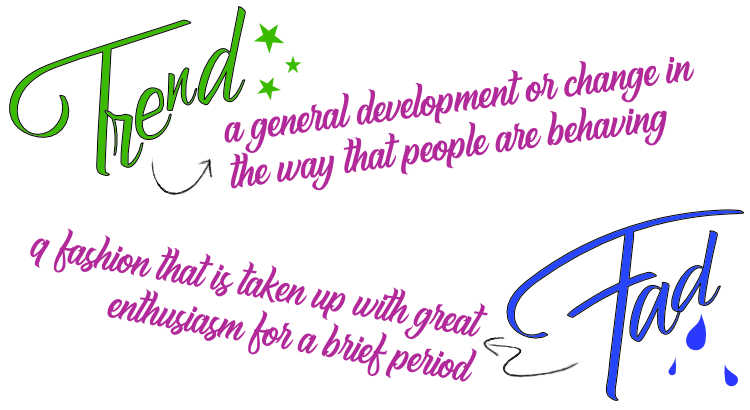Fitness trends and fads 2019
Since 2006 the American College of Sports Medicine (ACSM) has annually surveyed health and fitness professionals to get their views on exercise trends and fads. There is traditionally some tension between evidence-based innovations and media-driven trends, and so I’ve followed this large international survey with some interest. The list of what’s hot and (by omission) what’s not, has usually been good (for me) for at least one lecture a year!
The survey participants represent a variety of backgrounds; from the fitness industry, personal trainers, employees from community fitness facilities, and those working in physical activity and health roles. It’s worth bearing in mind that the online survey invites go out to an ACSM list of health and fitness professionals; those with ACSM accreditations, subscribers to ACSM publications, and those who’ve attended ACSM courses or conferences – so there is some inevitable bias with their sampling.

I guess it comes as no surprise that for 2019, wearable technologies top the trends list. These items are being marketed hard. Also, devices like heart rate monitors and activity trackers have undergone significant technical advances especially with improvements in accuracy and better sampling rates. So buyers perhaps now can have a little more faith in the numbers. ‘Mobile exercise apps’ were ranked number 13 on this year’s survey, so technology has a strong niche in the exercise domain. While measuring every aspect of life is not everyone’s ‘cup of tea’, these devices are great enablers for the OCD impaired and clearly a lot of people are motivated to be more active with the quality feedback that they provide.
Group exercise has been part of exercise and physical education for…. well, forever really …but it has only been in the last two years that group training has cracked the top 10. Is this support for our (exercise professionals) assertion that physical activity has much more to offer than physical and physiological improvements? Are we maybe more motivated to seek group activities in order to compensate for our modern tendency to connect to devices more than people? Possibly, although the definition of group training was pretty broad for this survey. I suspect one could be in a group like a spin class (which interestingly fell out of the top 20 in 2011) and not actually connect with anyone much at all. My cynicism aside, group and social aspects of exercise are evident in a number of the top 20 trends for 2019.
High-intensity interval training (HIIT) has been a top 5 trend since 2014 – for me, this an interesting example of a crossover trend. HIIT was predominantly a strength and conditioning method of working out used mainly by athletes, but it has now been embraced as an effective way for the general public to achieve exercise outcomes in a shorter time frame – the exercise of choice for the impatient! This year’s survey notes the concerns that have been expressed about the safety of HIIT for the general population, but in the hands of a competent exercise professional using appropriate progressions, I see no reason why it can’t be a safe and effective exercise adjunct.
Those with an eye on business opportunities and career paths should closely consider number 4 on this year’s list. Perceptions are certainly changing about being elderly and remaining physically and mentally rigorous, so older individuals are increasingly seeking more, and different physical activity options. Fitness programmes for older adults have been in the top 20 for a long time, but this one continues to rise through the ranks in the last few surveys.

This is probably an area that could really benefit from some fresh thinking and different approaches. Some of the other top 20 trends are already being blended into exercise programmes for this demographic.
My recent blog on expert service providers seems timely given that ‘Employing certified fitness professionals’ was this year ranked number 6. This issue has been a hot topic most years – probably no surprise given the survey participants are typically those who have sought accreditation! ‘Licensure for fitness professionals’ was also ranked at 18 in this year’s survey after appearing for the first time in the 2018 survey (#16). Clearly, exercise professionals internationally are concerned about these professional issues and would like to see the industry regulated far more. While those sentiments seem to be in the general public’s best interests, getting that legislation through will likely be a tricky one to negotiate and navigate.
Yoga is still there! Yoga is still hot. Bikram Yoga is really hot! In recent surveys Yoga has successively hung in there and seen off the likes of Core training, Pilates and Boot Camp training – those now seem more like fads than trends. It appears that many people continue to get lots of things out of Yoga and long may that last.
Rounding out the top 10 this year is ‘Exercise is Medicine’. Again we could expect that result given that the survey participants are linked to ACSM, and given that the Exercise is Medicine (EIM) movement is embedded in ACSM. I have mixed emotions on EIM – I’m excited that all of these people want to exercise, but I’m nervous that they are going to be disappointed that exercise proves not to be the universal panacea. If through EIM they discover that they love exercise – great, we’ll take it. Personally, I’d rather see physical activity and exercise remain open to a broader range of reasons and expectations.
What’s missing in the 2019 list? Well, I’ve already mentioned a few, but a couple of others that have slipped off the radar are circuit weight training, water-based exercise programmes, exercise for children, boxing and the use of online trainers. People are undoubtedly still doing and using these things, it’s just that they are not as popular as they once were.
This is not a highly scientific and rigorous survey, but it does increase awareness about the wider industry and the methods and accessories that exercise professionals are favouring and promoting.
Best, Phil
Selected reference
Thompson, W.R. (2018) Worldwide Survey Of Fitness Trends For 2019. ACSM’s Health & Fitness Journal 22(6); 10 – 17.

Shaken not stirred; fitness fads for 2021 – The 10th Man
September 19, 2021 @ 2:26 am
[…] took a look at the 2019 fads and trends, so let’s take a look at the 2021 […]